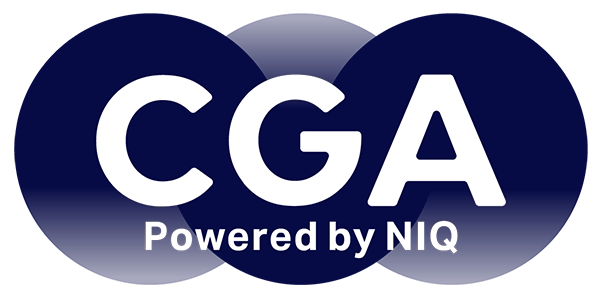
Wine sales in the on-trade have been slipping for a while now, but learning a trick or two from other drinks categories could help to revive them.
That’s one of the messages from the latest in CGA’s series of Wine Insight reports, produced in association with The Buyer, available now. ’Competitive Threats to the Wine Category’ draws on CGA’s suite of research sources to definitively answer big questions about wine’s performance in the on-trade, and help businesses optimise their range and marketing.
CGA’s On Premise Measurement data shows that while wine remains a hugely valuable category, its sales fell by £146m or 4.5% in the last year—more than any other category. The volume of still wine sales has fallen even more sharply, by 7.7% in the last 12 months.
This trend is echoed from wine drinkers themselves, through CGA consumer research with wine drinkers. One in six (17%) wine drinkers say they are drinking less wine than a year ago—nearly twice the number who say they are drinking more (9%).
However, while wine sales are dropping for some bars, pubs and restaurants, the flip side is that there is a big opportunity to reinvigorate the market. And there are encouraging signs that the tide may be turning, with the decline in sales softening slightly in the last few months alongside positive shoots of growth in some areas of the wine category.
But suppliers and operators can only turn things round if they understand the nuances of the wine market—and, just as crucially, where its competition is coming from. CGA’s data shows that wine drinkers are increasingly fickle, drinking more categories (5.1) than the average consumer. They over-index on the consumption of gin, cocktails, craft beer, ale and lager—a breadth of categories that shows how they can be easily tempted away from wine.
Of these, gin perhaps represents the greatest threat to wine sales. As CGA data highlighted, gin sales continue to soar, and the number of wine drinkers who also drink it has leapt by ten percentage points in 12 months. Over the last year alone, the growth in gin sales of nearly £500m has surpassed the total sales of still wine from the US and Spain.
The CGA Wine Insight Report lifts the lid on how wine sales are leaking away to other categories too, including cider, craft beer and soft drinks—and how each has different appeal to different consumer groups. Cocktails have been another major competitor, their on-trade sales having topped £600m a year. With more than 42,000 outlets now stocking cocktails—nearly twice the number just five years ago, and no and low-alcohol mixes also in growth, they have become a potent alternative for wine drinkers.
Categories like these offer a freshness, excitement and theatricality that wine sometimes struggles to match. But if bars, pubs, restaurants can latch on to some of this consumer demand, and demonstrate similar USPs in their wine, there is potential to build sales momentum. Capitalising on treat and social sharing occasions, playing to the trend for premiumisation and incorporating more sparkling wines into cocktails, are three ways to achieve that.
Another opportunity lies in the no and low alcohol wine market, which is small for now but starting to build interest among health-conscious consumers. Here and elsewhere in wine, if operators and suppliers can demonstrate the kind of dynamism and innovation that has powered drinks like cocktails lately, wine sales might soon start to bounce back.
CGA’s series of reports with The Buyer provide many more insights into wine performance in the on-trade and competitive categories, and data to help all operators and suppliers maximize sales. They are available to buy now. To learn more, contact Mark Newton at mark.newton@cga.co.uk.


